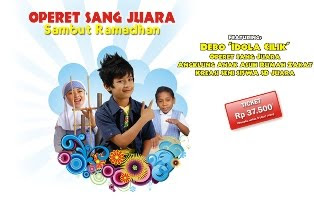My Indonesia
Indonesia, the largest archipelago and the fifth most populous nation in the world, has a total of 17,508 islands, of which about 6,000 are inhabited. Indonesia extends 3,198 miles (5,150km) between the Australian and Asian continental mainland and divides the Pacific and Indian Oceans at the Equator. With a total land area of 767,777 square miles (1,919,443 sq. km), its 190 million inhabitants are made up of 300 ethnic groups who speak an estimated 583 different languages and dialects. There are five main islands in Indonesia. These are: Java, Sumatra, Kalimantan, Sulawesi and Irian Jaya.
Across its many islands, Indonesia consists of distinct ethnic, linguistic, and religious groups. The Javanese are the largest and most politically dominant ethnic group. Indonesia has developed a shared identity defined by a national language, ethnic diversity, religious pluralism within a majority Muslim population, and a history of colonialism and rebellion against it. Indonesia's national motto, "Bhinneka Tunggal Ika" ("Unity in Diversity" literally, "many, yet one"), articulates the diversity that shapes the country. However, sectarian tensions and separatism have led to violent confrontations that have undermined political and economic stability. Despite its large population and densely populated regions, Indonesia has vast areas of wilderness that support the world's second highest level of biodiversity. The country is richly endowed with natural resources, yet poverty is a defining feature of contemporary Indonesia.
Across its many islands, Indonesia consists of distinct ethnic, linguistic, and religious groups. The Javanese are the largest and most politically dominant ethnic group. Indonesia has developed a shared identity defined by a national language, ethnic diversity, religious pluralism within a majority Muslim population, and a history of colonialism and rebellion against it. Indonesia's national motto, "Bhinneka Tunggal Ika" ("Unity in Diversity" literally, "many, yet one"), articulates the diversity that shapes the country. However, sectarian tensions and separatism have led to violent confrontations that have undermined political and economic stability. Despite its large population and densely populated regions, Indonesia has vast areas of wilderness that support the world's second highest level of biodiversity. The country is richly endowed with natural resources, yet poverty is a defining feature of contemporary Indonesia.
Sunday, July 5, 2009
Posted by
minie's world
at
11:52 PM
Soto Babat
(Beef Tripe Soup)
(Beef Tripe Soup)

Ingredients:
* 1¼ lb. beef tripe, cleaned and washed well
* ½ lb. beef, boiled in 5 cups water until tender and cut in ¼-inch cubes (optional)
* 12 cups water
* 4 cups beef broth
* 1 inch ginger root, peeled and sliced lengthwise
* 4 cloves garlic, peeled and sliced
* 1 Tbs. distilled white vinegar
* 6 oz. giant white radish, peeled and diced in ½-inch cubes
* 5 sprigs celery leaf, chopped
* 1 Tbs. fried shallots
Instructions:
* Rinse tripe well under running water until very clean. Bring water to a boil in a stockpot, add tripe and simmer until soft (approximately 2 hours).
* Strain water and cool tripe in ice water. Cit in pieces approximately 1 inch x ½ inch.
* Bring beef stock, ginger, garlic and vinegar to a boil in a large stockpot. Add tripe, radish, and beef cubes (optional). Simmer until vegetables are soft. Garnish with celery leaf and fried shallots.
Makes 4-5 servings.
Tips :
Eat it while its hot with rice and a glass of ice tea^^
sources : my mom's recipe, www.melroseflower.com, www.flikr
Labels: Indonesian Foods
0 Comments:
Subscribe to:
Post Comments (Atom)



,+Jakarta.jpg)




Post a Comment